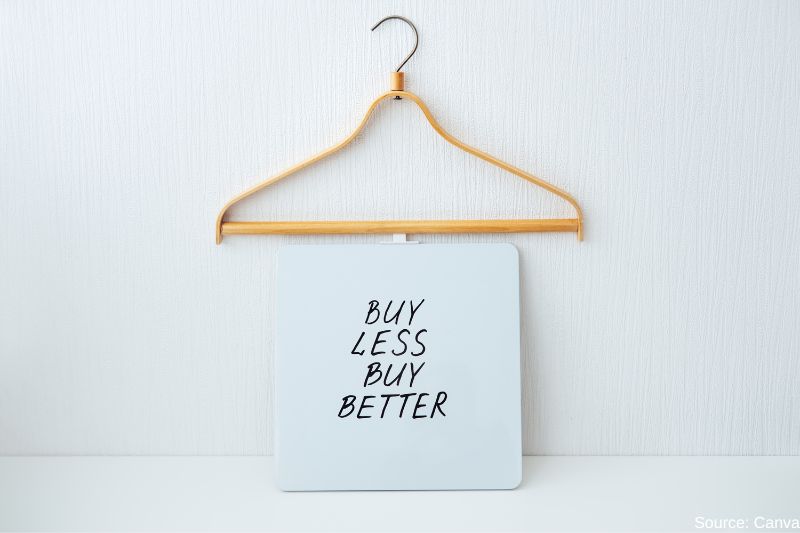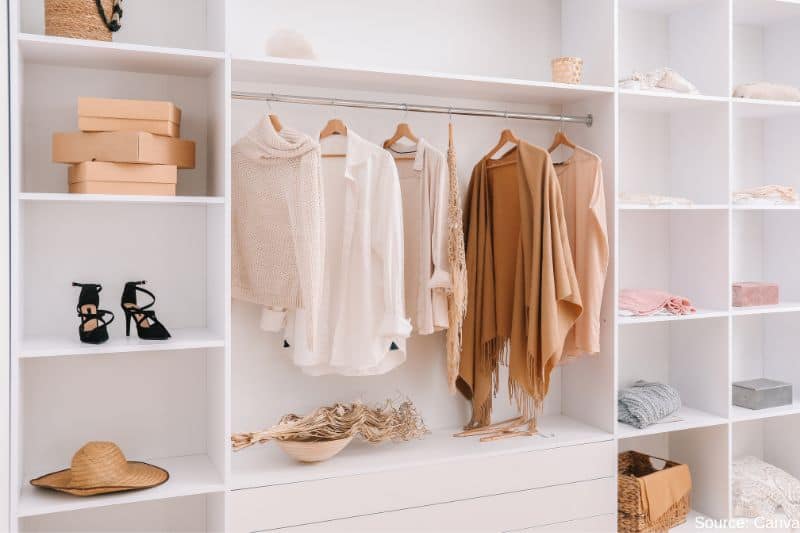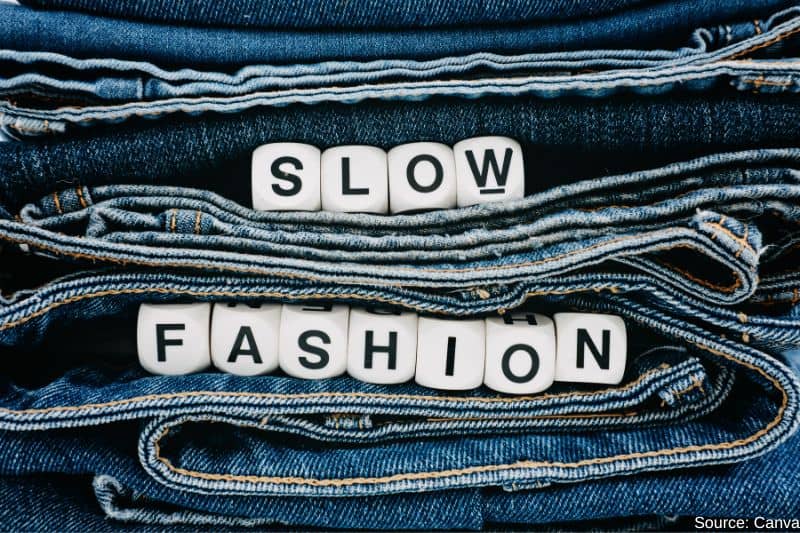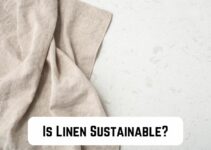If you’re an environmentalist, you already know how important it is to embrace sustainable living.
But what comes into your mind when you hear about sustainability? Well, if you’re like most people, it definitely isn’t fashion. You likely think of switching to greener energy, embracing water conservation methods, or other essential aspects of sustainability.
But did you know that fashion harms the environment in a big way? That’s true.
In fact, as per the report published by Business Insider, fashion produces 10% of all humanity’s carbon emissions. That’s more carbon emissions than international flights and maritime shipping produce combined!
The gist? The fashion industry impacts our environment significantly. As such, when we think about embracing sustainability, ignoring fashion can be a huge mistake.
So, how do we incorporate the aspect of sustainability into fashion?
Well, that’s what this article is all about. Herein, we’ll provide handy tips on how you can embrace slow and sustainable fashion without killing the love for your closet. Let’s read on.
Read: 15+ Sustainable Spring Activities to Engage Yourself
What is Slow and Sustainable Fashion?
Before we even delve into finding ways to embrace slow and sustainable fashion in our everyday lives, let’s begin by answering the most basic question: “What is slow and sustainable fashion?”
Well, in simple terms, slow and sustainable fashion is a movement whose major aim is to minimize the negative impact of fashion on our environment.
On the manufacturer’s side, it focuses on creating clothes in an environmentally friendly manner, improving working conditions for garment workers, and promoting ethical production practices.
However, regarding the consumer’s side, slow and sustainable fashion is all about making conscious choices when making fashion-related decisions.
Now, let’s explore some practical ways to embrace slow and sustainable fashion in your lifestyle:
1. Make The Most Out of What You Have
One of the best ways to embrace slow and sustainable fashion is to appreciate what you already have. Why would you need to shop for new clothes when your closet is overflowing with clothes?
So, try to make the most of what you already have. For different experiences, try combining different pieces of clothing from your current wardrobe. You’ll be surprised to discover several combinations you never thought would go together.
By sticking to what’s already in your closet, you cut down on the overall demand for clothes on the market, forcing manufacturers to reduce the amount they produce.
That, in turn, minimizes the environmental impacts that cloth production has on the environment.
Also, by making the most out of what’s already at your disposal, you reduce the amount of clothing that winds up in landfills. This minimizes the risk of environmental degradation when clothing materials are taken to landfills.
2. Shop Quality Over Quantity
When shopping for clothing, always consider quality over quantity. You’d rather get a single well-made pair of trousers that will last you for years than purchase multiple low-quality trousers that get worn out easily. The same applies to every other type of clothing.
Choosing quality over quantity helps reduce the number of trips to the store to replace worn-out clothes, minimizing your carbon footprint.
Additionally, when you opt for quality over quantity, you reduce the amount of clothing waste, which has long been a major concern in our landfills.
Of course, expect to pay more for higher quality apparel than their lower quality counterparts. But then, remember that the value you get from the higher-quality items will be higher than the low-quality ones in the long run.
3. Opt for Second-Hand Clothes
While this may not apply to everyone, if you’re okay with wearing second-hand clothes, going for them instead of getting new ones is one of the best ways to promote slow and sustainable fashion.
Depop, eBay, and scouring charity rail shops are all great places to obtain second-hand clothes.
Most of these clothes are durable and usually in good condition (some may even still have their original tags on them!), so if you’re good with second-hand clothes, opting for them would be a great way to promote sustainability in the fashion industry.
Unlike new clothes, second-hand clothes come at a lower price, so the overall idea is not just to save the planet but also your pocket.
4. Resell or Donate Your Old Clothes
What happens to clothes that no longer fit you or the ones you no longer love wearing? Send them alongside regular garbage?
Well, that’s not the best idea!
As much as you no longer intend to use them again, your old clothes could be a blessing to someone. So, instead of sending them to landfill, consider donating them to charities and other organizations that accept second-hand clothes.
Alternatively, you can cash in for them and make some money. Some of the best places to sell your old clothes include Depop, and eBay just to mention a few. That way, you’ll have addressed a need somewhere while making some money in the process.
5. Prioritize Sustainable Brands
When buying clothes, one way to promote sustainability and slow fashion is to give a priority to brands that have embraced sustainability in the first place. We’ve got several of these options at your disposal, and that includes Colorful Standard, Outerknown, and Kotn.
Of course, that list keeps growing as the number of consumers paying attention to sustainability when making purchasing decisions keeps increasing.
The good thing about these sustainable brands is that they use sustainable production methods and work with natural materials produced in a sustainable way. That’s contrary to their unsustainable counterparts that use environmentally harmful materials like synthetic fibers.

6. Take Good Care of Your Clothes
How long our clothes last depends on several aspects, especially how we take care of them. Even with the highest quality, apparel won’t last if you don’t pay attention to how you handle and maintain it.
So, when you think about sustainability in fashion, one way to achieve it is to take good care of what you already have.
Closely follow the instructions on the label to know the ideal way to handle and maintain your clothes. With the provided guidelines, you will know how to wash, iron, and store your clothes.
Additionally, try to mend any torn or damaged clothing instead of throwing it away and replacing it with new ones. Doing this will reduce your overall clothing waste and promote sustainability in fashion.
7. Consider Swapping Your Clothes
Did your size fluctuate so that your old clothes no longer fit you? Maybe you got bored by some of the clothes in your closet and no longer wear them.
Well, don’t let these clothes take additional space in your closet. How about swapping them so you get an opportunity to bring in new clothes to your wardrobe without spending a penny?
Currently, we’ve got several clothes-swapping societies where you can swap the pieces you no longer need for others. Embracing this practice will minimize the demand for new clothes, reduce our carbon footprint, and save us some pennies in the process.
Some swap societies allow you to swap for an equal number of clothes, while for some, swapping is based on a points system. What the latter means is that you get equal value for what you give out, ensuring fairness and satisfaction.
But then, your nearby swapping organization may have a different way of doing things, so enquire on what you expect before joining.
8. Take a Social Media Break During Sales
Social media has become more than just a place to connect with family and friends. Currently, sellers are leveraging social media platforms to expand their reach and increase sales, thanks to the extensive user base these platforms have — with recent stats by Smart Insights revealing that 62.3% of world population uses social media.
Now, sometimes, the urge to say “no” to that clothing sale may not be strong enough, and you may find yourself struggling with the temptation.
Well, one way to avoid this temptation is to take a social media hiatus during times of the year when these sales are at their peak. That includes during the festive season, Black Friday, and any other significant holiday.
The break will keep you away from the temptation of buying new clothes when your closets are already full. Plus, it’s a great way to detox from social media pressure and reconnect with yourself without unnecessary distractions.
9. Have a Shopping Ban
If you want to promote sustainable and slow fashion, one thing you have to do is ensure that you don’t shop anyway. You can try challenging yourself not to shop for any new clothes for the next three or six months, or even a year, depending on your level of comfort.
During this time, your focus should be on what you already have. You can consider styling your existing clothes in different ways to see if you can create new and exciting outfits. You’ll be amazed at how many combinations you’d never realized could work perfectly.
In addition, embracing a shopping ban will allow you to save money for other items that matter more in your life. Of course, this period will also allow you ample time to reassess your buying habit and figure out what actually matters to you.

10. Embrace a Capsule Wardrobe
If you don’t have a capsule wardrobe, you can consider building it. This wardrobe allows you to have only a small number of clothes, but each piece can be mixed and matched with any other member of the wardrobe and still look perfect.
A capsule wardrobe lets you work with only your favorite clothes, eliminating the need for a closet full of clothes you don’t like. It also helps minimize the amount of clothing waste, as you’ll be more intentional with your purchases.
For the clothes that don’t make the cut, you can donate, resell, or use other sustainable disposal methods to get them off your hands.
Read: 11+ Common Misconceptions About Minimalism
11. Reworking Your Clothes
Have you just become bored with the current outfit styles? Don’t discard them yet! Instead, consider reworking them to create new, unique pieces.
This can be as simple as altering the length of a dress or adding some embellishments to a plain top. There are plenty of tutorials online that can guide you on how to upcycle your clothes and give them a fresh look.
Not only does this promote sustainability by reducing waste, but it also lets you get creative and personalize your wardrobe. You can even turn it into a fun DIY project with friends or family, making the process more enjoyable and sustainable at the same time.






